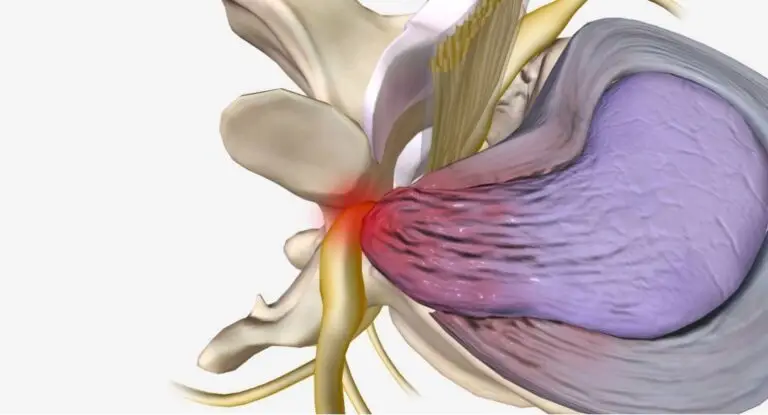Blog
All About Disc Injuries: An Osteopath’s Perspective

Introduction:
Disc injuries, though often underestimated, can significantly impact quality of life. From gradual wear and tear to severe extrusion or sequestration, the journey of a disc injury encompasses various stages, each presenting its own set of challenges. The osteopaths at Completely Aligned have witnessed firsthand the complexities of these injuries and understand the potential for holistic treatment to alleviate symptoms and promote healing. Call us for an appointment on 02 4655 5588 if you suspect disc troubles are at the route of your discomfort. In the meantime, let’s read on to find out more.
Anatomy of a Disc:
Intervertebral discs are the cushions between the vertebrae that provide flexibility and shock absorption to the spine. Each disc consists of a tough outer layer called the annulus fibrosus and a gel-like inner core known as the nucleus pulposus.
Stages of Disc Injury:
- Gradual Wear and Tear: The journey often begins with minor trauma or repetitive stress. This process can result from poor posture, improper lifting techniques, or age-related degeneration. Initially, individuals may experience mild discomfort or stiffness in the affected area.
- Annular Tear and Disc Bulge: Continued stress may eventually cause an annular tear, where the outer layer weakens or develops small tears. As a result, the inner gel-like substance may start to protrude through the tear, causing a disc bulge. Symptoms at this stage may include radiating pain, numbness, or tingling sensations along the affected nerve pathways.
- Herniation – Extrusion/Sequestration: In more severe cases, the disc’s inner core can herniate through the weakened outer layer. This herniation can manifest as either extrusion, where the inner material extends beyond the disc’s normal boundaries, or sequestration, where a fragment of the disc breaks off entirely. Symptoms of herniated discs often include intense pain, muscle weakness, and restricted mobility, significantly impacting daily activities.
Causes of Disc Injuries:
Disc injuries can be caused (or worsened) by various factors such as poor posture, improper lifting techniques, repetitive strain, age-related degeneration or traumatic injury. While some factors, such as age-related degeneration, are unavoidable, others like poor posture and improper lifting techniques, are within our control. Lifestyle modifications, a tailored exercise program, and ergonomic practices can go a long way in fighting the battle of the (disc) bulge.
How an Osteopath Can Help:
Osteopathic treatments focus on restoring balance and function to the musculoskeletal system, thereby alleviating pain and promoting healing. Here’s how an osteopath may assist individuals suffering from disc injuries:
Comprehensive Assessment:
Osteopaths conduct thorough assessments to understand the underlying causes and extent of the disc injury. This may involve physical examinations and neurological assessments. In some circumstances, an osteopath may refer you for diagnostic imaging, such as X-rays or MRI scans via your GP to assist with treatment planning and long-term management.
Manual Therapy:
Manual therapy techniques, including soft tissue massage, mobilisation, and manipulation, aim to relieve muscle tension, improve joint mobility, and reduce inflammation around the affected disc. These gentle, hands-on approaches help realign the spine and alleviate pressure on the injured disc.
Exercise Prescription:
Osteopaths prescribe tailored exercise programmes to strengthen the muscles supporting the spine, improve posture, and enhance overall spinal stability. These exercises may include core strengthening exercises, stretching routines, and postural correction techniques.
Lifestyle Advice:
Osteopaths provide guidance on ergonomic practices, proper lifting techniques, and lifestyle modifications to prevent further injury and promote long-term spinal health. This may involve ergonomic workstation assessments, advice on maintaining a healthy weight, and strategies for managing stress and tension.
Conclusion:
Disc injuries, whether they’re the minor results of gradual wear and tear or severe herniation, should not be ignored. With the expert guidance of the experienced osteopaths at Completely Aligned you can navigate this journey towards recovery and reclaim your quality of life. By addressing the underlying causes, relieving symptoms, and promoting spinal health, osteopathic treatment offers a holistic approach to managing disc injuries and restoring optimal function. Call us on 02 4655 5588 or book online now.
PS: If you found this useful why not follow us on Facebook or Instagram?
References
Physiopedia [ND] Disc Herniation. [Online] Available at https://www.physio-pedia.com/Disc_Herniation?utm_source=physiopedia&utm_medium=search&utm_campaign=ongoing_internal. (Accessed on 19/02/2024.)
Latest:
We're ready when you are
Don't let pain hold you back from doing the things you love
At Completely Aligned, our door is always open for you to get back to doing the things you love in life. Our team are available now to chat with you and work out how we can best support you.



